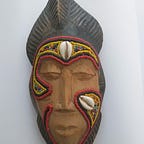Creation of a (Learning Object) Digital Student Brochure for MSc SmartEdTech Program
This project is in response to addressing a real-life need of the MSc SmartEdTech program, it is slightly off track from the assignment directives (hope I don’t lose points for this). As an experienced teacher and trained language instructor, I am quite familiar with the application of learning methods and theories to pedagogical activities. The reason I enrolled in the MSc program was to learn new practical digital skills that I could use to expand my digital prowess beyond classroom and instructional activities, and I hope to transition from an educator to an educational consultant.
As a student of the MSc SmartEdTech program and an aspiring educational consultant, I observed that the department does not have a brochure for new students and prospects looking to join the program. This is understandable as the program is still taking shape because it is a relatively new program compared to other departments in the university.
Many higher institutions have a downloadable brochure or prospectus on their website where students can get information about the school. This is quite important because students would have the ability to access the information even when they are not on the internet. Especially as some students live in countries where the internet data charges are expensive or not as stable as it is in western countries.
In a bid to alleviate this need, I decided to design a brochure that could be used as a template to inspire the future design of a brochure by the SmartEdTech faculty. To attain this, I set off by staging a mockup project based on the following fictional storyline….
The department of SmartEdTech received an email from a prospective student requesting a student brochure when he did not find one on the official page of the program. Tasked by this demand, the directors of the program along with the program coordinator decided to create a brochure within the shortest possible time, at least something that could present the information about the school in a simplified manner. The program coordinator recommended that they solicit the services of a few students from the department, after all, the department trains students on design and creativity, why look any further for a solution?
A call to action was sent out to recruit volunteers and three students volunteered in less than an hour. An online meeting was arranged and the team held a briefing with the coordinator, who also happens to be a graduate of the SmartEdtech program. As UX design trainees (UX design is part of the MSc program training), they all understood the importance of first creating a user journey map that will be used to understand and determine the components of the end product. The following user journey map was created to guide the project:
During the meeting, the SmartEdTech program co-ordinator recommended the MakerEd EDGIM approach for the design and creation process of the brochure due to its effective and simplified methodology.
Introduction to GIM-based MakerEd LO
The Gradual Immersion Method (GIM) is a transformational style of creativity and learning exploration that involves a collaborative approach to 3D digital production. The GIM, which is supported by the Augmented Reality (AR) method, focuses on topics such as familiarization, reflection, technological appropriation, perception, and creative cognition (Sinabria, 2015).
GIM-based MakerEd LO
The MakerEd LO focuses on applying the GIM approach in educational context. The diagram below illustrates the process of the GIM-based MakerEd LO.
After all the process was followed and concluded, the team had a final learning object tool that could be used digitally and physically. The brochure can be downloaded as print copy or can be viewed online as a digital catalogue on digital publishing platforms as seen below of the final product:
Below is a flowchart that represents the process that I followed to design the learning object using the 3 EDGIM Modules. It can be applied to any educational design process beyond the creation of learning objects.
References
Sanabria, J. & Sánchez-Escobedo, P. (2017). Evaluación de un Modelo de Inmersión Gradual Educativo Digital. In Sumozas, R. & Nieto, E. (Eds.) Evaluación de la Competencia Digital Docente (pp. 123–133). Editorial Síntesis.
Sanabria, J. C. (2015). The Gradual Immersion Method (GIM): Pedagogical Transformation into Mixed Reality. Procedia Computer Science, 75, 369–374. https://doi.org/10.1016/j.procs.2015.12.259
Hughes, K. (2019, October 8). Brochure design: 10 top creative tips. Creative Bloq. https://www.creativebloq.com/graphic-design-tips/how-to-design-a-brochure-123267
Wikipedia contributors. (2021, February 21). Prospectus (university). Wikipedia. https://en.wikipedia.org/wiki/Prospectus_(university)
Dr. Rani Gul, Shazia Kanwal, & Dr. Sadia Suleman Khan. (2020). Preferences of the Teachers in Employing Revised Blooms Taxonomy in their Instructions. Sjesr, 3(2), 258–266. https://doi.org/10.36902/sjesr-vol3-iss2-2020(258–266)
Kalmpourtzis, G. (2022). Don’t Force It, Solve It!: How To Design Meaningful and Efficient Design Processes (1st ed.). CRC Press.
Kaytes, G. (n.d.). User journey map: the ultimate guide to improving UX. Appcues Blog. Retrieved May 27, 2022, from https://www.appcues.com/blog/user-journey-map
